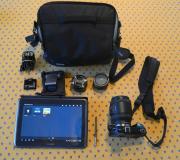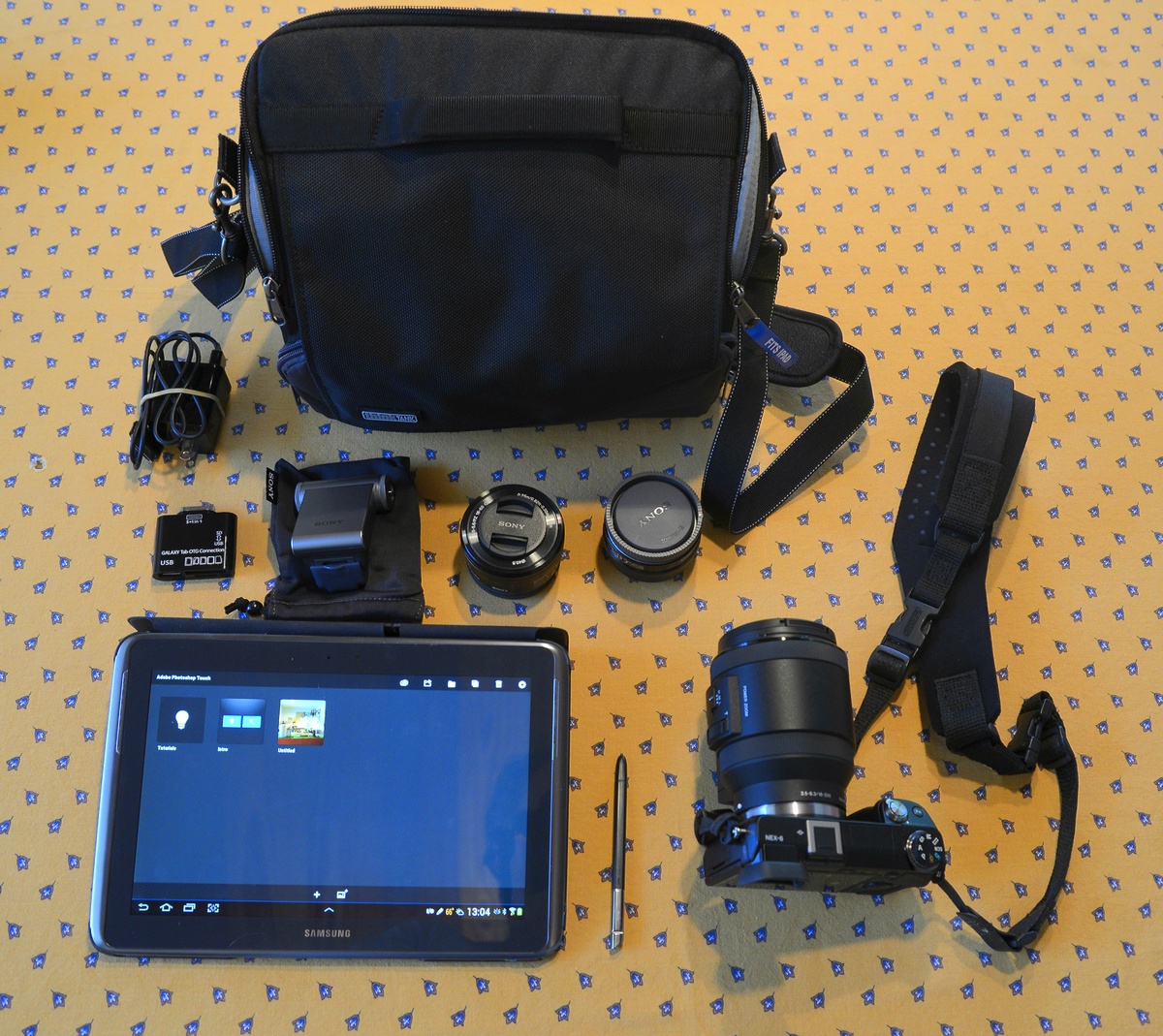- Photo Safaris
- Alaska Bears & Puffins World's best Alaskan Coastal Brown Bear photo experience. Small group size, idyllic location, deluxe lodging, and Puffins!
- Participant Guestbook & Testimonials Candid Feedback from our participants over the years from our photo safaris, tours and workshops. We don't think there is any better way to evaluate a possible trip or workshop than to find out what others thought.
- Custom Photo Tours, Safaris and Personal Instruction Over the years we've found that many of our clients & friends want to participate in one of our trips but the dates we've scheduled just don't work for them or they'd like a customized trip for their family or friends.
- Myanmar (Burma) Photo Tour Myanmar (Burma) Photo Tour December 2017 -- with Angkor Wat option
- Reviews Go hands-on
- Camera Reviews Hands-on with our favorite cameras
- Lens reviews Lenses tested
- Photo Accessories Reviews Reviews of useful Photo and Camera Accessories of interest to our readers
- Useful Tools & Gadgets Handy tools and gadgets we've found useful or essential in our work and want to share with you.
- What's In My Camera Bag The gear David Cardinal shoots with in the field and recommends, including bags and tools, and why
- Articles About photography
- Getting Started Some photography basics
- Travel photography lesson 1: Learning your camera Top skills you should learn before heading off on a trip
- Choosing a Colorspace Picking the right colorspace is essential for a proper workflow. We walk you through your options.
- Understanding Dynamic Range Understanding Dynamic Range
- Landscape Photography Tips from Yosemite Landscape Photography, It's All About Contrast
- Introduction to Shooting Raw Introduction to Raw Files and Raw Conversion by Dave Ryan
- Using Curves by Mike Russell Using Curves
- Copyright Registration Made Easy Copyright Registration Made Easy
- Guide to Image Resizing A Photographers' Guide to Image Resizing
- CCD Cleaning by Moose Peterson CCD Cleaning by Moose Peterson
- Profiling Your Printer Profiling Your Printer
- White Balance by Moose Peterson White Balance -- Are You RGB Savvy by Moose Peterson
- Photo Tips and Techniques Quick tips and pro tricks and techniques to rapidly improve your photography
- News Photo industry and related news and reviews from around the Internet, including from dpreview and CNET
- Getting Started Some photography basics
- Resources On the web
- My Camera Bag--What I Shoot With and Why The photo gear, travel equipment, clothing, bags and accessories that I shoot with and use and why.
- Datacolor Experts Blog Color gurus, including our own David Cardinal
- Amazon Affiliate Purchases made through this link help support our site and cost you absolutely nothing. Give it a try!
- Forums User to user
- Think Tank Photo Bags Intelligently designed photo bags that I love & rely on!
- Rent Lenses & Cameras Borrowlenses does a great job of providing timely services at a great price.
- Travel Insurance With the high cost of trips and possibility of medical issues abroad trip insurance is a must for peace of mind for overseas trips in particular.
- Moose Peterson's Site There isn't much that Moose doesn't know about nature and wildlife photography. You can't learn from anyone better.
- Journeys Unforgettable Africa Journeys Unforgettable -- Awesome African safari organizers. Let them know we sent you!
- Agoda International discounted hotel booking through Agoda
- Cardinal Photo Products on Zazzle A fun selection of great gift products made from a few of our favorite images.
- David Tobie's Gallery Innovative & creative art from the guy who knows more about color than nearly anyone else
- Galleries Our favorite images
The smallest, lightest "pro" camera rig & digital darkroom ever?
The smallest, lightest "pro" camera rig & digital darkroom ever?
Submitted by David Cardinal on Mon, 05/20/2013 - 11:23
 The drudgery of carrying lots of heavy, complex, gear is a bane for any type of photography that involves travel. Camera bodies, lenses, accessories, tripod, chargers, a laptop, and of course cables. Add the padded cases needed to safely stow all the gear and you've got anywhere from 30 to 70 pounds for just about any really serious photo travel.
The drudgery of carrying lots of heavy, complex, gear is a bane for any type of photography that involves travel. Camera bodies, lenses, accessories, tripod, chargers, a laptop, and of course cables. Add the padded cases needed to safely stow all the gear and you've got anywhere from 30 to 70 pounds for just about any really serious photo travel.
So I'm always on the lookout for ways to make life simpler. This month I've assembled a new travel photo outfit that may set some records for how light and how small it is, while still allowing for "pro" grade photography. Now, I'm not recommending everyone junk what they have and go with it -- I'll talk about the shortcomings later -- but it is pretty amazing what is becoming possible.
My "flyweight" rig
- Sony NEX-6 mirrorless APS-C camera body, with External flash, 16-50mm "kit" lens, Sony 18-200mm lens, Sony 20mm f/2.8 lens
- Samsung Galaxy Note 10.1 tablet with included pressure-sensitive Wacom stylus, SD card adapter, Photoshop Touch, Rawdroid software, and charger.
- A few 32GB SD cards, and a USB card reader (just in case), plus a USB charger.
 That's it. The whole thing fits nicely in a ThinkTank Mirrorless Mover 30i bag and weighs in at well less than 10 lbs. After years of carrying heavy photo bags and briefcases, I barely feel it on my shoulder.
That's it. The whole thing fits nicely in a ThinkTank Mirrorless Mover 30i bag and weighs in at well less than 10 lbs. After years of carrying heavy photo bags and briefcases, I barely feel it on my shoulder.
Okay, so it's easy enough to provide a list of gear, now I'll take you through each component, how I've made it work for me, its strengths, and its limitations (which are still pretty substantial
Going mirrorless
There is no doubt that mirrorless cameras are growing in popularity far faster than DSLRs. As a result, they are getting sizeable R&D investment from big name players like Sony. In particular, Sony's NEX line uses an APS-C sensor (same as the Nikon DX format DSLRs, and Canon consumer DSLRs) -- one that is larger than either micro-4/3 cameras or the Nikon 1 series.
For me the larger sensor size is a must. Frankly, I'm really spoiled by my full-frame DSLRs, so it'd be really tough for me to truly switch to a mirrorless camera (at least at this point), but out of the bunch, the new Sony NEX-6 is my current favorite. An updated and slightly cost-reduced version of the NEX-7, it is just under $900 with the cute new 16-50mm "pancake" zoom.
The NEX-6 also has a built-in Electronic Viewfinder (EVF), which is a must for me. Why have a small camera if you have to stick a large viewfinder on top? As EVFs go, it is pretty amazing. At over 2MP it is like having an HD video of your scene. That said, if you are a serious shooter you'll be spending a lot of time looking through the viewfinder at your subjects, and you may ask yourself why you traveled all the way to Africa (for example) only to stare at lions on a tiny TV screen. The quality of experience is not, IMO, the same as a true optical viewfinder -- especially one of the large, bright versions on a full-frame body.
Lenses for the Sony NEX cameras
Because the NEX sensors are a full APS-C, lenses are similar in size to those for consumer DSLRs. So stepping "down" to a micro 4/3 system would definitely save you some size, weight, and cost -- at the expense of slightly lower image quality from the smaller sensor.
In my case, the new Sony 18-200mm image stabilized zoom gives me an effective focal length of 300mm. Not exactly a bird photographers reach, but enough for many safaris and travel outings. I'll be shooting with it during my upcoming photo walk with B&H at the Bronx Zoo on the 28th, and will have more to report (and pictures to show) after that.
For walking around, the newly designed and nearly pancake-sized kit lens, the Sony 16-50mm lens with motorized zoom is great. I added the Sony 20mm f/2.8 "pancake" lens to my bag for lower light shooting.

Samsung Galaxy Note 10.1
Obviously, no tablet is going to equal the performance or productivity of a serious laptop running Photoshop (or Lightroom). But my Samsung Galaxy Note 10.1 has a full-up pressure-sensitive Wacom stylus built-in. Couple that with the surprisingly useable Photoshop Touch, and you've got a reasonable setup for editing images. Touch can currently save images up to 12MP, which is okay in this case since the NEX-6 shoots at 16MP.
Raw files are a different story, unfortunately. While several free or inexpensive apps for Android, like Rawdroid, will view them, when you go to edit they rely on the embedded JPEGs. So here too there is a tradeoff for our handy, lightweight tablet we give up true raw processing.
The Note has both a microSD card slot -- so you can shoot with a microSD card + adapter in the Sony and simply move the card -- and provision for a true SD card adapter -- so you can simply stick your SD card into the Note and read from it.
I haven't really worked out a full archiving workflow (if you are near the cloud, that is always an option), but figure that a 64GB microSD card (in addition to the 32GB in the tablet) would serve as my file storage, while I use the SD card adapter to read images.
So I should stress here that for high-volume shooting and processing this setup is far from ideal. I don't see taking it along on a serious photo safari where I am planning to shoot hundreds of images a day or anything. But it does work as an end-to-end system for shooting, reviewing, and doing some processing on images before posting, sharing, or archiving them.
More to come
I'll be writing more about my experiences with this kit as I shoot for the next few weeks. In the meantime I'd love to hear your experiences or ideas for lightweight or inexpensive alternatives to a full-up "pro" set of photo gear that still let you get (and process) the shots you want.

